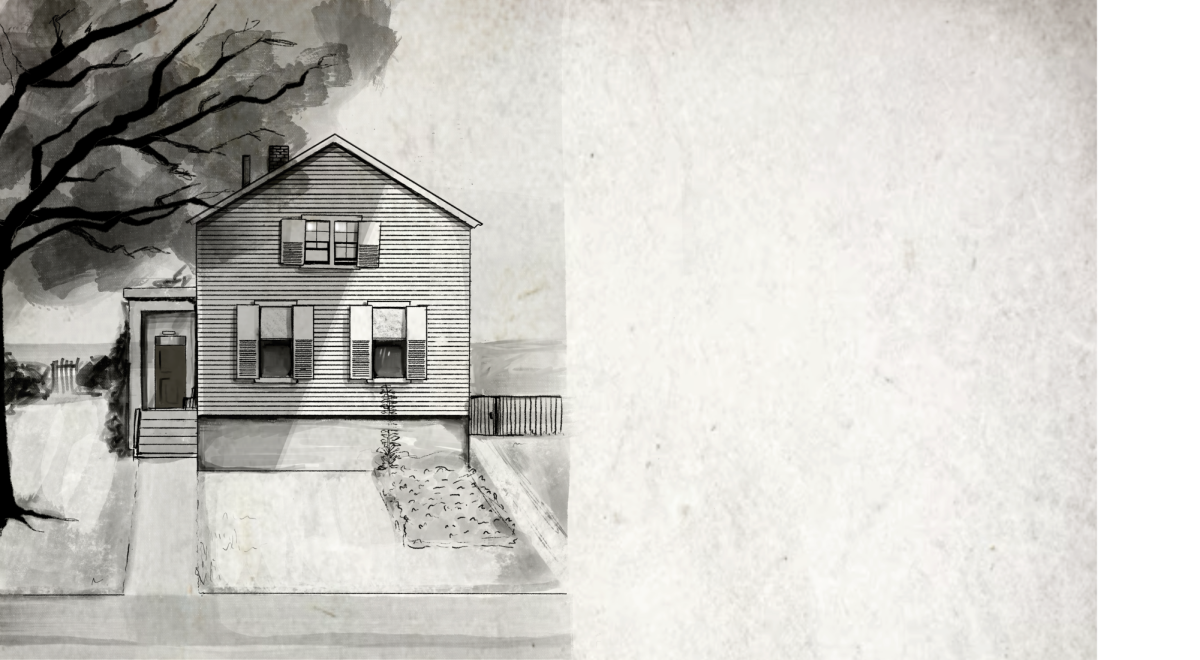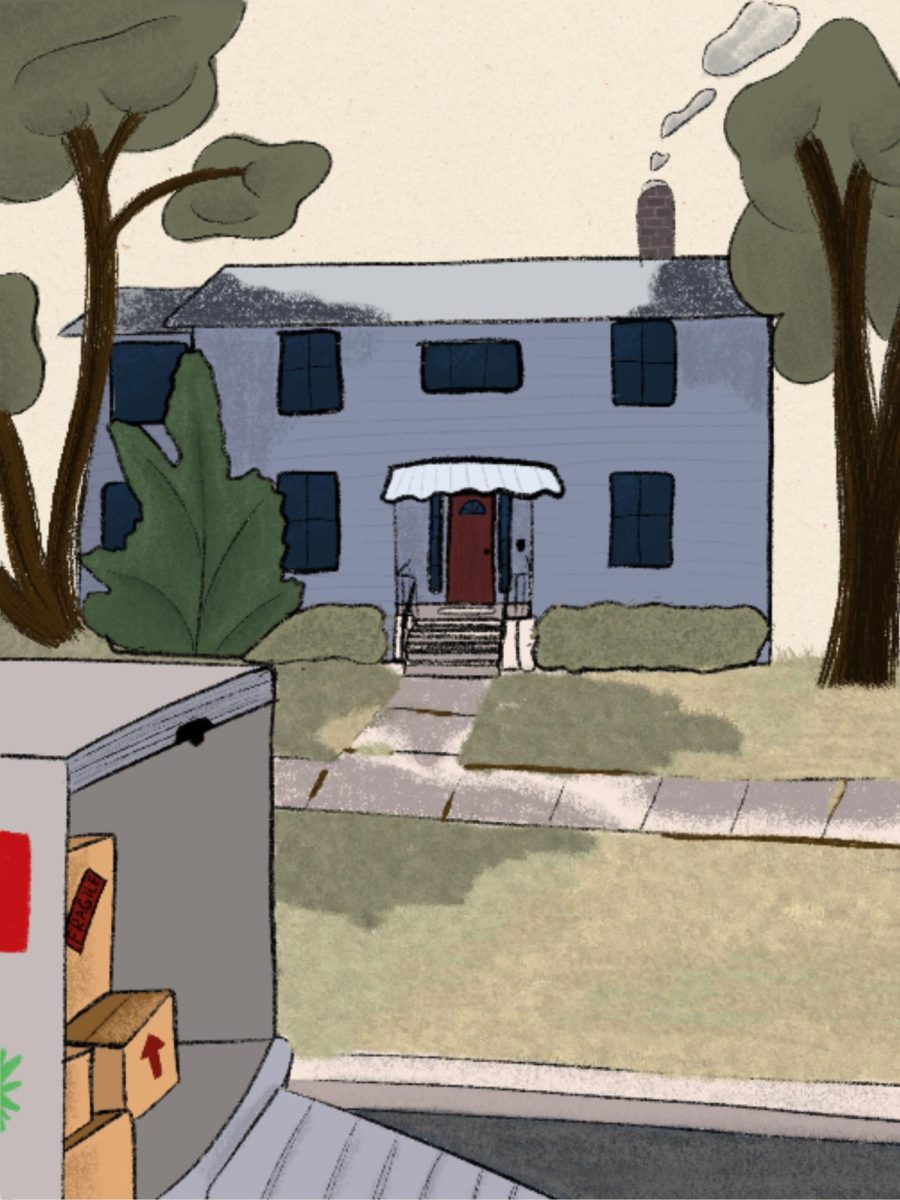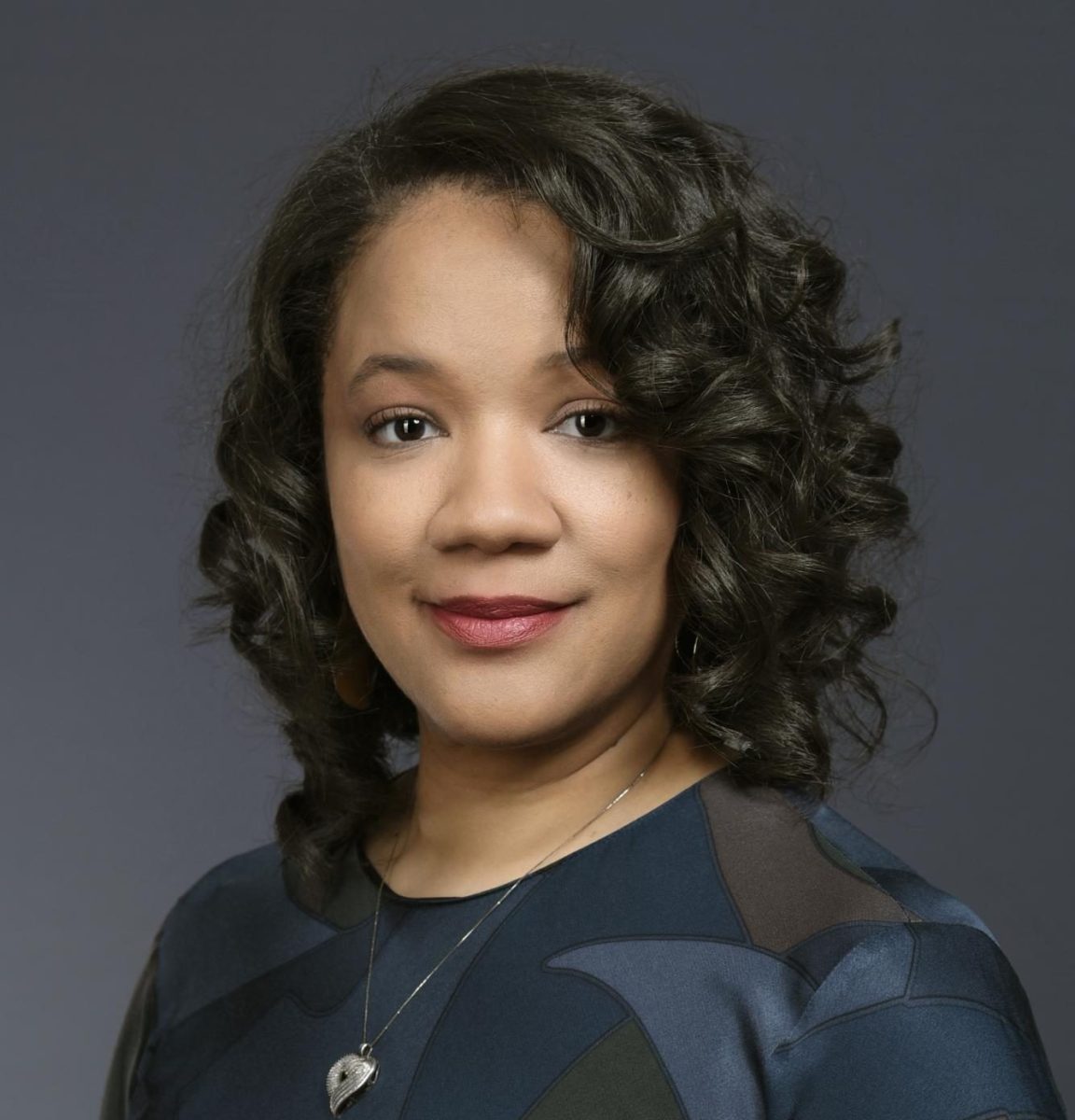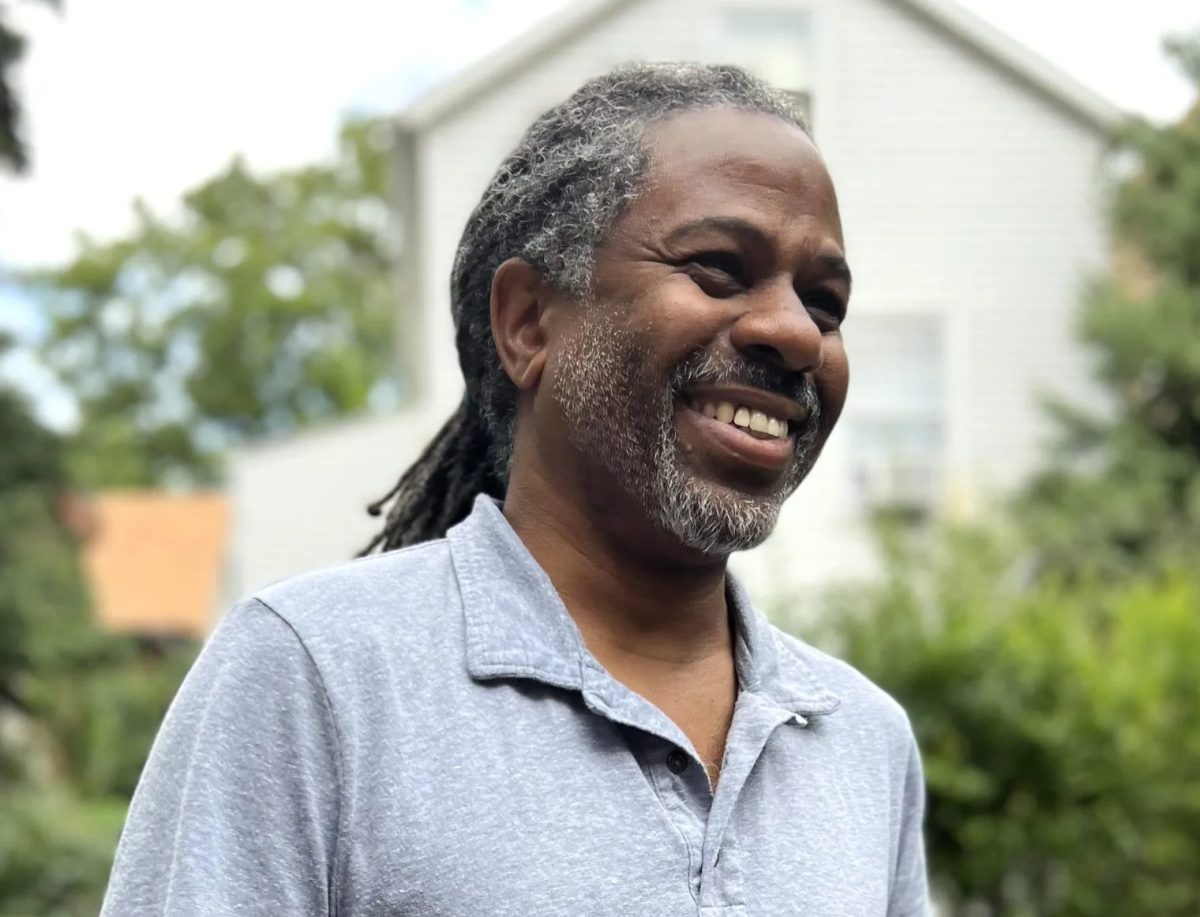On a Zoom call for the Reparation Information Thought Series in the winter of 2023, Robin Rue Simmons captivated her audience through the screen, engaging a national audience of activists and community leaders. As the woman who pioneered Evanston’s reparations movement, Rue Simmons was a monumental guest for the series, which is coordinated by organizations that pride themselves on advocating for justice initiatives like reparations. This was not the first Zoom held to engage these advocates for reparations, and it will not be the last.
Reparations leader Nkechi Taifa joined Rue Simmons on the call to facilitate a discussion about Evanston’s reparations program and the precedent that it sets for other movements nationwide. Taifa is a civil and human rights attorney and author who authored, “Reparations on Fire: How and Why it’s Spreading Across America.”
The title of her book reflects an emerging truth across the country: Black leaders are fighting for reparations from their state and local governments. Evanston’s success in ingraining the first-ever local reparations program into law only fueled this fire. For some, it has sparked new efforts, and for others, it has simply validated that the work they’ve put in has the potential to come to fruition.
“We look at Evanston as one of the models. Whatever [Evanston has], it’s working. And it’s really encouraging to people in other places,” said Terri Barnes, the Chair of the Kansas City Mayor’s Commission on Reparations.
Kansas City, Missouri
Mayor Quinton Lucas of Kansas City, Missouri announced the appointment of the Mayor’s Commission on Reparations on May 1, 2023. The goal of this commission is to study and recommend potential reparatory justice programs for past discrimination against Kansas City’s Black community. However, Lucas explained during the commission’s first meeting that the purpose of the commission is not to atone for past discrimination but to address the disparities that still exist for Black residents.
For example, in Kansas City, Troost Avenue represents a historic racial divide that has impacted generations of Black residents. Named after slave owner Dr. Benoist Troost, the street was used to redline Kansas City into two main neighborhoods. The east side of Troost Avenue became predominantly Black, while the west side became predominantly white. University of Missouri-Kansas City Professor Brent Never, who was featured in an NBC News article on the topic, explained that households one block east of Troost collect an annual average income that is $20,000 less than households on the west side. In addition, as Lucas explained, the life expectancy is about a decade lower on the east side of the infamous street.
“Why do we see such a different life expectancy on one side of Troost versus another? And why is it so darn hard to get a loan in so many parts of our city where the majority of our population is Black?” he said.
In order to address the modern-day impacts of Kansas City’s history of segregation, the 13 commission members chose to break down five specific problem areas: healthcare, education, housing, economics and criminal justice. According to Barnes, there’s an especially severe racial equity gap in the Kansas City education system.
“We did a study last year, and we looked at all the kids in the Missouri School District, and 85 percent of Black students are not reading at grade level. 85 percent. In my head, that is absolutely insane… So, for me, the public school system has failed. Our education policies have failed,” she said.
Despite this demonstrated issue, Barnes explained that the route to financial reparations for Kansas City is incredibly complicated. Even if the entire community was in favor of a reparations program (which, she noted, is not the case), the economic journey to addressing issues in each of these five areas is a difficult feat.
“I don’t know that a local city program is going to [fulfill reparations goals] anyway. I think that we’d have to have reparations at the federal level in order to really address some of the wealth gaps and the education gaps, because they’re huge,” she said.
This staggering wealth gap is one of a variety of reasons that Kansas City has not yet been successful in passing a reparations program. Another factor that’s impeding the process is community willingness. In 2023, the Kansas City Star, a local newspaper, released a survey to the Kansas City community to ask their opinions on reparations, and about three-quarters of the respondents were white. One white man hailing from northeast Kansas City who wished to remain anonymous answered the survey with his sentiments.
“The civil war ended over 150 years ago. No one is still alive from that time,” he wrote. “Since then we’ve had affirmative action, a Black President and an array of civil rights laws passed. I believe there is no right for any reparations.”
This mindset is quite common throughout America. According to a study by the Brookings Institution in 2021, 72 percent of white Americans opposed reparations. By contrast, in the fall of 2023, Northwestern University’s Center for the Study of Diversity and Democracy (CSDD) released results of an Evanston survey that revealed “70 percent of white respondents viewed the reparations program as ‘good public policy.’” This serves as a reminder that while Evanston has certainly set a precedent for other cities working towards reparations, the community is unique in its political leanings.
“It’s important to understand that Evanston has a different ideology than a general sample of American adults or even of a sample of an entire state, as many studies have used,” said Tabitha Bonilla, who co-authored the survey.
Despite the differences in political affiliation between the cities, residents of Kansas City—like Barnes—are working on ways to unite their community in support of the reparations movement. She explained that Kansas City has a strong interfaith religious community, the support of which could help set in motion reparations plans.
“One of the things that Robin Rue Simmons said is that the faith-based community was one of Evanston’s biggest supporters. [We want] to try to really get them on board, and we know that we need to do more work around pulling the faith-based community together, interfaith, to help us with a narrative,” Barnes said.
Overall, while the road to reparations may be difficult for Kansas City, some members of the commission are confident in the ambition of their mayor. Lucas has worked on a variety of other equity-based projects throughout his career as mayor; he established the Housing Trust Fund to develop accessible housing for low-income families and helped adopt a zero-fare transit initiative for Kansas City. He has proven to be dedicated to the cause, just like Barnes, who shared her reasons for leading the reparations initiative.
“I would probably be someone else if I never had to worry about racism, discrimination, health issues and concerns. That’s why if there’s any possibility to correct that for the next generation, I want them to be able to experience life in a very full way,” she said.
Providence, Rhode Island
In the bustling east coast city that is Providence, Rhode Island, Mayor Jorge Elorza had reparations on his mind. He, in addition to Lucas, was a member of Mayors Organized for Reparations and Equity (MORE), a coalition announced in 2019 to unite mayors nationwide and support plans for reparations. However, Providence’s efforts for reparations have been long and complicated, beginning officially with the creation of a Providence Commission on Reparations in 2022. This was composed of about a dozen appointees who discussed avenues through which reparations for Black residents in Providence could be achieved. However, the initiative for reparations did not go exactly how the commission had hoped.
The COVID-19 equities fund, which was supplied by the American Rescue Plan Act (ARPA) money delegated to Providence during the COVID-19 pandemic, was supposed to fund Providence’s initial reparations efforts. However, due to a variety of restrictions on the use of the funding, the budget could not be delegated as an individual reparations fund, despite what commission members had hoped.
The money needed to be used specifically to repair damages caused by the COVID-19 pandemic. Although the Black community across the country was disproportionately impacted by this tragedy, Providence was legally unable to supply individual Black residents with the funds.
However, the commission was set on distributing money and found a way to do so; it ended up allowing non-profit organizations who intended to support Providence’s Black community apply for the money and use it for their work. According to Dwayne Keys, one of the members of the commission, this wasn’t anything close to the reparations that many had envisioned.
“Because of the rules of ARPA, we couldn’t exclude organizations. So, you could have predominantly white-led organizations apply for the reparations funds because, technically speaking, we cannot exclude them,” he said.
In addition to the drawbacks the commission faced due to the ARPA regulations, they were concerned about how the program could be sustained long-term. ARPA funds are not continuous; eventually, the commission would either need to end the program or figure out a new way to financially support it. According to Keys, the former occurred.
“I would have preferred that reparations are not something that’s a one-time thing. I was hoping that this would be a continued commission. It was not,” he said.
The legal and financial struggles that the commission faced during the development of the program resulted in a plan that some Black residents were disappointed in. Since the funds had been delegated to non-profit organizations for their use, Black families harmed by systemic racism in Providence did not see direct government payments.
“When [the program] came before the City Council’s Finance Committee, there were Black residents who were in opposition to the proposed budget, and they talked about how what we were doing as a commission was not actually reparations in terms of addressing the harm, the history,” Keys said.
This response was similar to the one that the initial Evanston program received from many Black residents. When the program was introduced, one of the arguments in opposition to it was that a housing program simply didn’t go far enough to truly heal the damage caused by Evanston’s racist history. While the Providence program still passed and is currently in action, Keys warns that movements for reparations throughout the country must remain attentive to the voices of their Black community.
“I will say going forward, you need to make sure this is true and genuine [and that] it’s long term. Don’t do what we did in terms of Providence. I think we had a great idea. Yet we did not bring the Black community residents with us in this process. So in the end, we saw how our good intentions were not well received across the community,” he said.
Sacramento, California
In June of 2021, Sacramento Mayor Darrell Steinberg decided to move California’s capital city in a new direction, helping organize the MORE coalition. Not long after, Sacramento’s city council voiced its support for Steinberg’s ambition, adopting a resolution endorsing the State of California’s newly-created Reparations Task Force.
Sacramento’s next step towards reparations was through two years of collecting oral histories and documents that culminated in a report by the Sacramento African American Experience History Project (SAAEHP). The project, published in June of 2023, examines racial discrimination and government neglect in Sacramento that date back to its first non-native settlement in 1839 and continue through the late 21st century. It details that African Americans and other marginalized racial groups were forced into Sacramento’s West End neighborhood by racist housing policies. Once the Sacramento government had concentrated its African American residents in one area, it demolished their home.
“The redevelopment of the West End neighborhood in the mid-20th century destroyed large swaths of Sacramento’s downtown, including the homes, businesses, churches, and other significant gathering places of the African American community,” the SAAEHP states. “As a result, very few buildings related to the history of the local African American community before the 1950s survive.”
With stories collected and information gathered, Sacramento officials are looking to push reparations efforts forward alongside the city’s Black community.
“The whole process needs to be reparative in itself,” said Kelly Fong Rivas, Sacramento’s Senior Advisor on Racial Equity. “So if you’re just charging forward and saying, ‘This is what should happen,’ especially when you are a Jewish mayor… you need to really ensure that you’re centering the community that’s been harmed.”
Additionally, as the capital of the country’s most populated state, Sacramento has city leaders that communicate directly with state officials to craft educational materials and share policy efforts. This partnership has been especially critical for reparations efforts, as California has been at the national forefront of the reparations push. The state formed a Reparations Task Force in 2020, which already presented a report to the state legislature and disbanded — having served its purpose — in 2023.
“When [California’s task force was] still meeting and doing the commission work, we did engage with them and talk with some of the commissioners to make sure that we were also helping to share information, and to get folks engaged with that process. We’ve also learned a lot from their process and the research, which has been great,” Fong Rivas said.
While Sacramento’s busy political landscape (and saddening lack of snow) make it seem a long way from Evanston, our city has still provided it with a critical framework. Fong Rivas has visited Evanston several times to discuss reparations with local leaders, and has connected with government officials and activists across the country through the same networks.
“It’s interesting to be able to look and contrast the types of models that there are benefits to having,” she said.
Sacramento’s reparations efforts currently remain as nothing more than a mayoral initiative and a compilation of historical information, but Fong Rivas is optimistic about the future of reparations in the city. She also understands the inherent contradiction in a government attempting to repair the damage of a problem that it caused not long ago.
“Ideally, we would have… private entities, nonprofits and others contributing so that you’re not only investing government funds for government harm, but you have a full community that’s recognizing [the issue] and contributing,” Fong Rivas said. “It’s moving at the speed of trust together, rebuilding relationships between individuals, organizations and government.”
Asheville, North Carolina
Yet another city pushing towards reparations is Asheville, which is home to nearly 100,000 people and sits nestled in the Blue Ridge mountains of western North Carolina. The city has a reputation for its lively arts scene and tourist temptations, but it also grapples with centuries of racial tensions dating back to slavery.
Similarly to Sacramento, Evanston and other cities pushing reparations forward, Asheville’s Black community has been victimized by racist housing policies and gentrification. One historic Black neighborhood in Asheville, called Stumptown, was a vibrant epicenter of Black culture in Asheville before being completely erased by government policies.
“The predominantly Black Hill Street neighborhood developed adjacent to Stumptown starting around 1900. Both areas were redlined in the late 1930s, and later devastated by urban renewal,” the Montford & Stumptown Fund reported.
On July 14, 2020, facing significant pressure from Black Lives Matter protesters and seeking to address a consistently neglected issue, Asheville’s city council passed a resolution supporting reparations for Asheville’s Black community. Afterwards, Asheville’s city manager laid out a three-step process for the city to execute its reparations goals, from gathering information to forming a reparations commission to finalizing and presenting a report to the council.
“Early on, I was really excited that we were even broaching this topic,” said Brenda Mills, Asheville’s Director of Equity & Inclusion. “[We’re] telling the story of what happened. The harm that was done, the taking of land, the lack of opportunities and an inability to generate generational wealth.”
Since the initiative comes from the city council instead of the mayor, the council was able to approve a budget to establish the Community Reparations Commission in Mar. 2022. The commission advances its work through five subcommittees: criminal justice, health and wellness, economic development, education and housing. Each committee searches for solutions-oriented recommendations to report to the city council.
The commission released its first draft of recommendations in October 2023, with suggestions like “allocate funding to support Blacks who have been involved in the criminal justice system” and “create an economic development center for Black Asheville.” A final report is expected to be presented at some point in 2024.
Once the commission’s phase of the process is over, Asheville officials will face the most difficult task: passing a well-funded and satisfactory reparations policy. Asheville, unlike the other cities that we have covered, lies in an extremely conservative region. Recently, Asheville’s U.S Representative was Madison Cawthorn, a Republican known for speaking at the Jan. 6 insurrection at the U.S capital, voicing neo-nazi beliefs and likening vaccine mandates to “modern-day segregation.”
Further, North Carolina is moving in the opposite direction of Asheville, with new legislation censoring conversations on race-related concepts in schools. The state government will likely continue to crack down on simple acknowledgments of systemic racism, making it more difficult for Asheville to move its reparations forward.
While Mills knows that a significant portion of the public will not support reparations for Asheville, she sees opportunities for the city to garner support from the larger community.
“You can’t say, ‘We’re doing housing just for Black people,’” she said. “But you can say, ‘People who have been affected by urban renewal [and] gentrification are underserved, underrepresented.’ That’s exactly Black and brown people. And so we’re doing some innovative ways, not sneaky ways, but innovative ways in which we can hopefully put funding into the community in a way that helps African Americans.”
Mills understands that Asheville has a long path towards reparations that compensate for the city’s history of destruction and racial discrimination, but she’s optimistic about the direction of the movement.
“I just don’t think we want to deal with [systemic racism]. That’s why we avoid it… So, it’s just exciting that it’s not just in Asheville, California or somewhere, but it’s becoming nationwide. So I’m very hopeful for it.”
The National Fight for Reparations
As communities throughout the country fight to achieve reparations for their Black residents, wide varieties of structural obstacles have emerged. Evanston, as Rue Simmons and Barnes pointed out, is unique in the overwhelming community support that stems from the city’s predominantly left-leaning demographic.
Besides political beliefs, one factor that leads to adjustments in reparations programs is the history of the city. Fong Rivas cites the example of Palm Springs, Ca., which displaced as many as 1,000 residents without compensation by burning down their homes to create new real estate developments in the 1960s. Palm Springs’ reparations program could be oriented around restoring Black homes and providing the compensation that Black families never received.
She cites Asheville and other cities that enabled and encouraged slavery, where the Black population still deals with generational trauma and adverse health effects. The solutions in Asheville may be different from the ones in Palm Springs, which may be different from the ones in San Francisco or Evanston.
“I think when you look at the definition of reparations, you have to be really explicit about what you’re applying it to. Are you talking about it holistically, or are you talking about it very specifically?” Fong Rivas said.
Thus, those who are working to bring reparations to their communities cannot simply follow an outline set by Evanston; there is no universal guideline. Every community varies based on their citizens’ needs, resources and standpoint. This makes every local reparations proposal drastically different, taking aspects from established proposals to create something that works for its unique situation.
One thing that remains true across cities is the need for community support, which reparations leaders from coast to coast struggle with. Even as the reparations movement has become a hot-button issue across the country, support remains low.
A 2021 poll by the University of Massachusetts Amherst/WCVB found that two-thirds of Americans oppose reparations for descendants of slavery, with 10 percent of Republicans and 60 percent of Democrats voting in favor of any form of reparations for Black Americans. The Brookings study furthers that 50 percent of the opposition to reparations say that descendants of enslaved people either do not deserve economic compensation or are already treated equally in today’s society.
A lack of education surrounding the history of African Americans and the ingrained, institutional racism that slavery brought into the country has been holding back legislation relating to healing the blatant wealth gap and social discrimination Black people in America face. According to Pew Research Center, Black Americans who have received a bachelor’s degree or more are 13 percent more likely to support reparations than those who have received a high school diploma or less.
The lack of education and public support around reparations makes it harder to pass H.R. 40, which is a federal reparations bill that was first brought to Congress in 1989. Former Mississippi Representative John Conyers introduced the bill and continued pushing for its implementation until his resignation in 2017.
The bill would establish the Commission to Study and Develop Reparations Proposals for African Americans to explore the injustices and cruelty that enslaved people faced and the societal and political discrimination that Black Americans endure today. Notably, there is a precedent for a Congressional reparations law, since the Civil Liberties Act of 1988 granted $20,000 to every living former detainee of World War II Japanese internment camps.
H.R. 40 has been diligently introduced at every Congressional session since its creation over thirty years ago, though it did not again make it out of the House Judiciary Committee until the 117th Congress passed it to the House floor in 2021. Although H.R. 40 was unable to receive the next vote on the floor, the progress marks a potential shift in the future of national reparations.
The topic of reparations has been approached from countless angles for a variety of oppressed groups, but one issue always arises: the cost. The Tax Policy Center reports that closing the wealth gap between Black and white households in America would cost an estimated $10.7 trillion, over 500 times more than the U.S spent on reparations to compensate Native American tribes for stolen land in 1946, when adjusted for inflation. Further, fulfilling the cash equivalent of Civil War General William Sherman’s unmet pledge of 40 acres of land and a mule to families of formerly enslaved people would amount to $3 trillion in today’s dollars.
Local leaders like Barnes, Keys, Fong Rivas and Mills are only able to bring as much change as their communities allow and are hindered by both financial and social barriers. The large majority of municipalities and communities do not have the financial resources to even educate their citizens about the need for reparations and their historical significance, let alone pass meaningful proposals and legislation. However, reparations advocates believe that federal intervention through actions like passing H.R. 40 and providing funding to existing reparations programs is important in order to create lasting change.
Until the day that H.R. 40 is passed and communities embrace fair, well-funded local reparations, leaders across the country will continue to tell stories of injustice, struggle and pride. They will continue to develop solutions that seek to address systemic racism, whether they’re housing policies or direct cash payments. And they will continue to champion a more racially just America for future generations.
“[Reparations] will be different for each family… For me, reparations looks like safety for Black people. It looks like joy for Black people,” Rue Simmons said. “It looks like economic opportunity, the ability to dream and be heard and included.”










